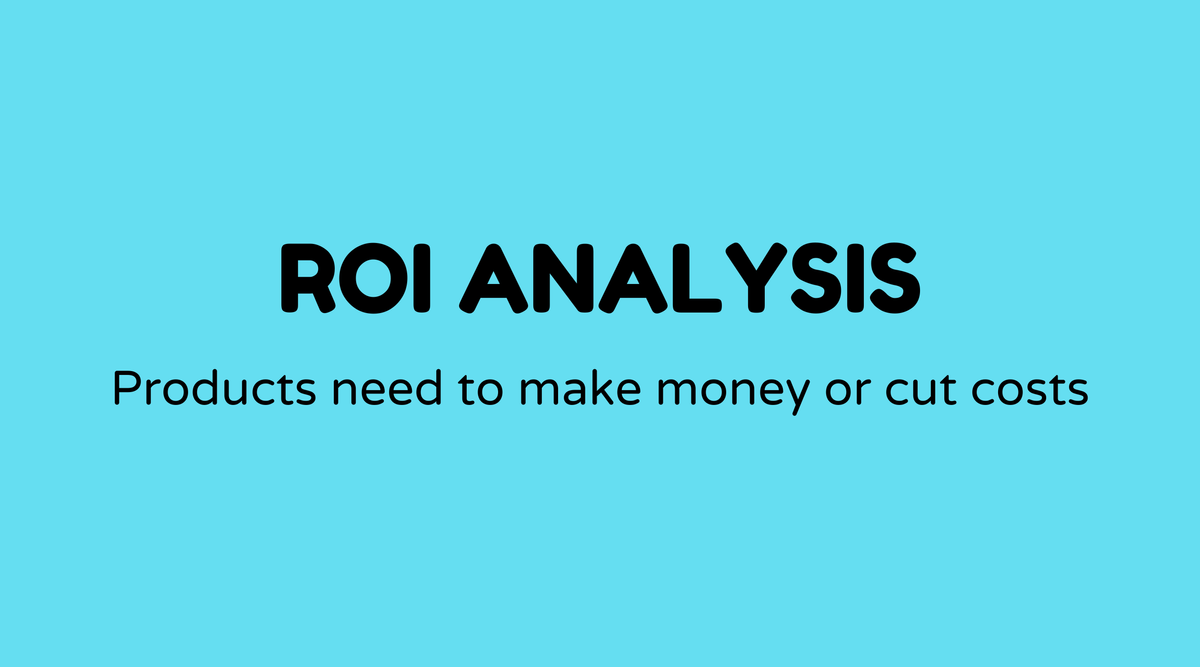ROI Analysis

Overview of ROI Analysis:
When we discuss the concept of ROI Analysis, we’re examining a key aspect of financial decision-making. ROI or Return on Investment provides a method to assess how much value you receive for your expenditure. In simple terms, it helps you understand what you achieve relative to what you've put in. From large corporations to small startups, grasping ROI Analysis is essential to avoid financial losses.
As we delve further into ROI, it may seem complex with its numbers and percentages, but it's more straightforward than it appears. By the end of this, you’ll understand why ROI is essential for enhancing financial strategies and guiding your business decisions.
Why ROI Analysis Matters:
ROI Analysis isn't just a term to throw around in financial discussions. Imagine fueling a vehicle with an unknown brand of gasoline. Wouldn’t you want assurance regarding its performance? That's the role of ROI — it provides that assurance. Mistakes or oversight in investments can be expensive. Here are some benefits of mastering ROI:
- Clear Decision-Making: It supplies easy-to-understand metrics to help prioritize projects.
- Financial Efficiency: Ensures resources aren’t wasted.
- Performance Evaluation: Aids in assessing past investments to estimate future returns.
- Competitive Edge: Understanding ROI can help you outmaneuver competitors by effectively utilizing resources.
Integrating these elements into your strategy boosts business insight and aligns objectives with measurable results.
What is ROI Analysis:
So, what exactly constitutes ROI Analysis? It acts as a financial guide on investment effectiveness. At its core, ROI is a ratio or percentage calculated by dividing net profits by total investment costs. The end value indicates the level of profitability or loss your investment has brought to your enterprise.
Here’s a look at the ROI formula:
[ \text{ROI} (%) = \left( \frac{\text{Net Profit}}{\text{Investment Cost}} \right) \times 100 ]
In essence, for every dollar invested, the ROI reveals the percentage return you have achieved. Various adjustments can be implemented, such as accounting for time or including different variables, considering the nuances of various sectors.
How to Conduct ROI Analysis:
Conducting an ROI Analysis might seem daunting, but follow these steps, and you'll master it in no time:
- Calculate Revenue: Identify the earnings generated from the investment.
- Deduct Costs: Subtract the initial cost of the investment.
- Apply the Formula: Use the basic ROI formula provided above.
- Interpret Results: Assess whether the ROI percentage meets, exceeds, or is below your benchmarks.
ROI Analysis can also take into account non-financial benefits like brand recognition or customer satisfaction, thus offering a comprehensive view.
Examples of ROI Analysis:
To visualize this concept, let’s review a couple of scenarios:
-
Example 1: Marketing Campaign: Consider investing $10,000 in an online marketing campaign. If it yields $15,000 in profit, then:
[ \text{ROI} = \left( \frac{15,000 - 10,000}{10,000} \right) \times 100 = 50% ]
A gain of 50% over your initial investment. -
Example 2: Equipment Purchase: You acquire machinery for $20,000, anticipating it will save $5,000 in labor costs annually. After four years, your total savings are:
[ \text{ROI} = \left( \frac{20,000}{20,000} \right) \times 100 = 100% ]
This shows a complete recovery of your investment, effectively doubling your savings.
FAQs:
Is ROI Analysis solely about finances?
- No, ROI can also apply to time investments, customer satisfaction, and other non-financial aspects.
How often should ROI Analysis be conducted?
- Regularly, particularly before and after any major investment or project start.
Can ROI be negative?
- Yes. A negative ROI indicates a loss against the initial investment amount.
What other metrics complement ROI?
- Metrics such as Net Present Value (NPV) and Internal Rate of Return (IRR) can provide additional context.
Does ROI account for time?
- Traditional ROI does not consider time, which is why more comprehensive versions like NPV are often used.
Can ROI predict future success?
- It provides historical context and forecasts possible gains but isn’t infallible regarding market uncertainties.
And just like that, you've demystified the concept of ROI Analysis. Remember, while it's a useful tool, pairing it with market insights and expert advice will sharpen your investment strategies. For those looking to learn more, consider seeking out expert resources or courses on YouTube or checking platforms like Investopedia for additional insights.



